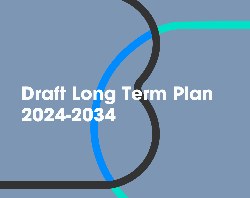Residential Sales Continue Two Year Growth
Residential Sales Continue Two Year Growth
House prices across New Zealand continue to grow, provisional figures for the quarter ending September 2003 released by Quotable Value New Zealand (QV) today reveal.
A growth rate of 17 percent in the QV House Price Index (QV HPI) over the 12 months to September 2003 is New Zealand’s highest recorded national annual house price growth in 15 years, says QV Valuation’s Blue Hancock.
There was significant growth in the quarter in a number of areas. The highest quarterly QV HPI was in Waitakere City (9%), followed by Christchurch (7.46%), Tauranga (7.15%), Invercargill (6.46%), Nelson City (5.96%) and Wellington City (5.49%).
Areas that achieved annual growth rates in excess of 20% for the year ended September 2003 were: Nelson City (39%), Invercargill (32%), Marlborough (32%), Dunedin City (23%); New Plymouth (21%), Christchurch City (20%) and Waitakere City (20%).
Other cities to grow between 10% and 20% were Tauranga, Masterton, North Shore City, Auckland City, Wellington City, Palmerston North, Hamilton City, Manukau City, Papakura, Napier City and the Waikato.
The QV housing price index has now risen every quarter for the last two years, but how long this will continue is unknown, Mr. Hancock said.
“Continued house price growth at current levels is likely to be unsustainable in the medium term, especially given the current drop in people coming to New Zealand,” he said.
Houses were also becoming less affordable as higher prices outstrip income growth.
“House sale volumes appear to have leveled off this quarter, and while short term interest rates have stabilised, they are showing some upward pressure and fixed interest rates are already increasing.”
On the other hand, there are several factors keeping pressure on house prices he says: unemployment remains low, and section prices continue to rise, as do construction costs.
“Given these factors and that property is still perceived as a good investment, we can still expect increasing pressure on values in the short term as a result of buyer demand outstripping supply.
“There seems to be enough momentum in the current climate to sustain continued levels of house price growth,” Mr. Hancock said.
Quotable Value New Zealand believes the following information may be useful to your business and property journalists. It contains commonly asked questions about the Quarterly House Price Index and their answers:
What is the Quarterly House Price Index (QHPI)? The Quarterly House Price Index (QHPI) is an index used to measure the movement in house prices over time. The index takes into account the ‘Average Sale Price’ in relation to the ‘Average Capital Value’ of properties sold, as well as the volume of sales within that area. This index is only aggregated and published for areas where there are sufficient sales to provide confidence in the output.
Why does Quotable Value New Zealand recommend using the QHPI? Quotable Value New Zealand (QVNZ) recommends using this index when commenting on sales trends, because it reduces the impact of extra-ordinary circumstances and low volume of sales, thereby providing a more robust indication of market house price trends.
There is a weakness in using average sales prices as a measure of value in the property market. Average Sales Price can be a poor indicator when the sales volumes are low and particularly when the sales prices vary significantly. With a low sales volume, a few sales of very high price properties can significantly impact the “average” price.
QV recommends the reporting of index movement rather than average sales prices.
How is the QHPI calculated? Freehold open market sales are included. The price to value ratio for each sale using net sale price and the rating valuation are calculated. The price to value (p/v) ratios for the Territorial Authority are summed and divided by the number of sales to calculate the average p/v ratio. The percentage change between the current average p/v ratio and the previous period’s average p/v ratio are calculated. This percentage change is used to calculate the current period’s index for the Territorial Authority.
When did the QHPI begin? The QHPI was re-based in September 1989, effectively meaning the index begins in that period. However, QVNZ are able to produce statistics using its database going back in some areas to 1985.
We were expecting more sales in the area for the quarter because of the perception of a buoyant market – why would there be less sales than anticipated? Some sales may not have been notified to the Territorial Authority in time for inclusion in the QHPI. Notification of the sale to the Territorial Authority does not occur until after the sale has been settled and documents forwarded by the solicitor. This, generally, introduces a lag of 4 to 6 weeks before the Territorial Authority records the sale.
Why is the latest quarter always shown as “Provisional Data”? QVNZ provides the QHPI 6 weeks after the end of the quarter. However, due to the lag between the Sales and Purchase Agreement being signed, the sale being settled and the Territorial Authority being advised, there will still be sales for the past quarter that are not yet included in the statistics. The current quarter’s statistics are considered ‘provisional’ as they provide a good indication of market activity but do not provide full sales details.
The finalised index figures are provided in the following quarter’s report.
How is a Territorial Authority’s Suburbs defined and named? Each Territorial Authority concerned defines its boundaries. The suburb boundaries are, however, based on Sales groups, which are internally defined by QVNZ.
Why are some Territorial Authorities missing in the QHPI? Statistics for some Territorial Authorities will be missing from the published QHPI because QVNZ has decided not to publish them because it believes there are not enough sales occurring within the quarter to produce a statistically reliable sales trend for the Territorial Authority area.
Where does QVNZ get its data? QVNZ maintains a national database on Property Information that it creates by sourcing updates of the District Valuation Roll from Territorial Authorities.


 Citizens of the Sea: Sailors To Revolutionise Our Understanding Of Pacific Biodiversity
Citizens of the Sea: Sailors To Revolutionise Our Understanding Of Pacific Biodiversity Netsafe: Making A Splash With Online Safety: Netsafe Launches New Flagship Programme For Kids
Netsafe: Making A Splash With Online Safety: Netsafe Launches New Flagship Programme For Kids NZGBC: Flood Resilience PhD Student Widi Auliagisni Named Future Thinker Of The Year 2024
NZGBC: Flood Resilience PhD Student Widi Auliagisni Named Future Thinker Of The Year 2024 Business Canterbury: European Free Trade Agreement A Game-changer For Canterbury
Business Canterbury: European Free Trade Agreement A Game-changer For Canterbury Business Canterbury: Urges Council To Cut Costs, Not Ambition For City
Business Canterbury: Urges Council To Cut Costs, Not Ambition For City Wellington Airport: On Track For Net Zero Emissions By 2028
Wellington Airport: On Track For Net Zero Emissions By 2028



